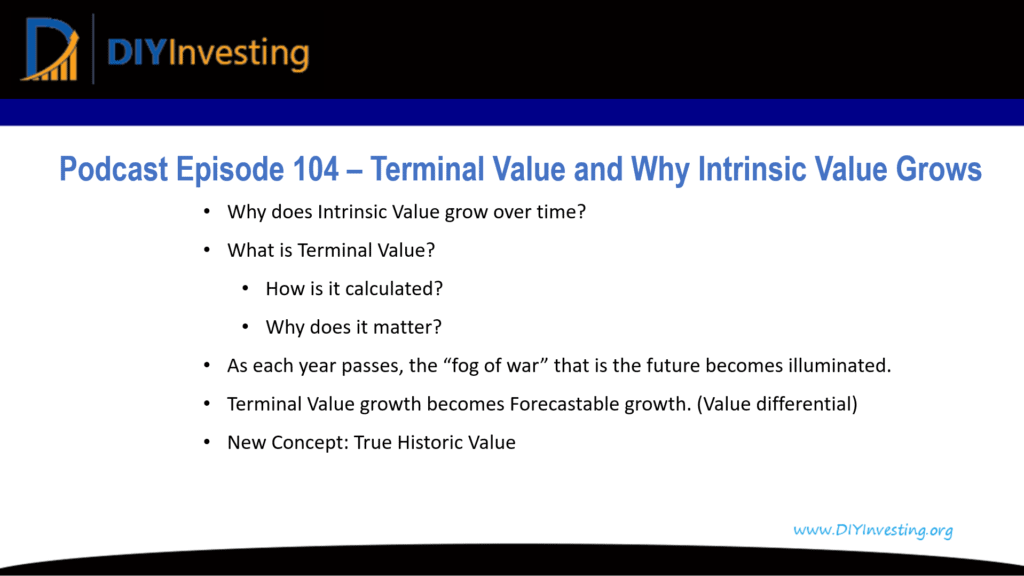Mental Models discussed in this podcast:
- Terminal Value
- Intrinsic Value
- True Historic Value
- Discounted Cash Flow Calculation
- Net Present Value
- Fog of War
Please review and rate the podcast
If you enjoyed this podcast and found it helpful, please consider leaving me a rating and review. Your feedback helps me to improve the podcast and grow the show’s audience.
Follow me on Twitter and YouTube
Twitter Handle: @TreyHenninger
YouTube Channel: DIY Investing
Support the Podcast on Patreon
This is a podcast supported by listeners like you. If you’d like to support this podcast and help me to continue creating great investing content, please consider becoming a Patron at DIYInvesting.org/Patron.
You can find out more information by listening to episode 11 of this podcast.
Show Outline

Why does Intrinsic Value grow over time?
There are multiple ways to answer this question.
- It doesn’t. Intrinsic value is fixed, but your estimate of intrinsic value will change.
- Your assumptions were wrong because you made a mistake.
- Your assumptions were wrong because you can now see more of the future.
- A year moved from being inside Terminal Value to inside your forecast range.
What is Terminal Value?
- How is it calculated?
- Why does it matter?
- Terminal Value is the net present value of all future cash flows discounted back to a specific year in the future. (Perhaps 5 or 10 years from now)
- In other words, Terminal Value is your estimate of the Intrinsic Value of a stock 10 years from now.
- As each year passes, the “fog of war” that is the future becomes illuminated. That means that we can now *SEE* the future.
- Concept: True Historic Value
Summary:
Terminal Value is the net present value of all future cash flows discounted back to a specific year in the future. Intrinsic value is fixed, but your estimate of intrinsic value will change over time.
In addition, you can evaluate how the intrinsic value of a company has changed over time in the past by calculating the True Historic Value. This value is the intrinsic value at a past date assuming 10% future annualized returns all the way to the present.
